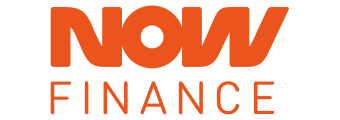Breaking Bad could have been one episode if Walter White was Australian. He would have received cancer treatment in the public health system, with some recovery in the private health system, and he wouldn’t have had to resort to making meth. One of the most telling scenes early in the show is when he says he doesn’t have the best insurance coverage to the ambulance driver, and asks if he can drop him off on the side of the road.
While things aren’t as dire in Australia, in some states you have to pay for the ambulance ride. It makes sense, really, because they could quite literally be keeping you alive while going 130km/h in some cases. Naturally, there are insurance or extra ‘subscription’ policies that cover this. We’ve broken it down by state, and help answer the question: Is ambulance cover worth it?
Compare low-rate personal loans in the table below.
In which states do you need ambulance cover?
Residents of Victoria, Western Australia, South Australia and the Northern Territory require what’s called an ‘ambulance subscription’, while those in New South Wales and the ACT are advised to see if they are covered through their hospital cover. As it stands, Tasmania and Queensland residents currently do not require ambulance coverage.
See more details below.
Automatic ambulance cover
Queensland
No. Nein. Non. If you are a permanent resident of Queensland, you are automatically covered within the state and interstate. Note, Queensland does not have any ‘reciprocal arrangements with other states or countries, meaning if you’re an international or interstate visitor, it could be worthwhile assessing your travel insurance policy to see if it covers interstate visits.
If you’re a Queensland resident and receive an interstate ambulance bill, you’re advised to forward the invoice to the Queensland Ambulance Service.
Tasmania
Tasmania operates on a state-based levy system to provide comprehensive coverage around the state for residents, should a third party payment option be unavailable (such as through motor insurance). In many cases, you’ll be forwarded an invoice from Ambulance Tasmania, which you can then send to the Motor Accidents Insurance Board if you need emergency care due to a car accident.
Alternatively, you can opt to have your bill waived by re-sending the invoice to Ambulance Tasmania along with proof of residency. Reciprocal arrangements exist for visits to WA, Vic, SA and NT, but not Qld, NSW or SA.
New South Wales & Australian Capital Territory
Ambulance NSW (and ACT) is a levy-based scheme that operates under hospital cover. If an ambulance is called, you’ll likely receive an invoice, and if you have hospital cover, you can then send the bill to your provider. There are reciprocal agreements with WA, Vic, and the NT.
Subscription states
Victoria
As mentioned, Victoria is one of the states requiring a ‘hospital subscription’. Unlike Netflix, you might not want to let this one lapse! For a single, ambulance cover costs just under $50 for the year, and for a family, it’ll cost just under $100. Ambulance rides might not be covered under your private health insurance, and an uninsured ride could cost you $1,200, so a subscription could be worthwhile.
South Australia
Ambulance subscription with the South Australian Ambulance Service (SAAS) costs less than $90 for singles, and under $180 for a family under a standard policy, with discounts available for pensioners. For interstate cover it’s a little dearer: an emergency call-out without cover costs more than $1,000.
Western Australia
Ambulance cover in WA is a bit different and depends on whether you reside in the Perth Metro area, or outside of it. Within Perth metro, Ambulance Subscriptions are sold through health funds BUPA and HBF. Those outside Perth metro purchase a subscription via the WA St John Ambulance Service.
Only VIC, TAS, NSW, and the NT have reciprocal agreements with the St John Ambulance Service in WA.
Northern Territory
The NT also has its own St John Ambulance service, with subscription rates from $110/year for individuals, and not much extra for families. Additional holiday coverage is also available. The cost of an ambulance call-out in the NT is kilometre-based and could cost more than $1,000.
Is Ambulance Cover Worth It?
In states where you need to subscribe to an ambulance service, the fee could be well worth it. For individuals it’s often less than $100 for the year, and for families not much more again, while pensioners can get a good discount. The alternative is you need to call Triple Zero and are then hit with a thousand-dollar invoice weeks later. Some ambulance services also charge extra for ‘non-emergency' rides, and it’s usually up to the discretion of the organisation to determine how that is defined.
Some less densely-populated areas such as the NT or WA could charge per kilometre, potentially blowing out the cost even further. If you’re part of one of these states and travelling interstate, it’s worthwhile looking for reciprocal agreements. If not, your health insurance or travel insurance could cover you, but always double-check.
If you’re a Tasmanian or Queensland resident, the good news is that you’re covered within your own state, but make sure you’re covered out-of-state too. And if you’re residing in NSW or the ACT, check if your hospital cover covers ambulance trips.
For visitors to Australia, no matter which state, double-check whether your travel insurance covers ambulance rides. Some states may have individual arrangements with other countries, particularly the United Kingdom. Do your due diligence here.
Savings.com.au’s two cents
The United States often gets tarnished as a dystopian hellscape where healthcare is concerned, but in Australia, you might be surprised to know you need to ‘subscribe’ to ambulance coverage in some states like you would to a magazine or Netflix. Getting an invoice of $1,000 or more after an emergency is the last thing you want if you’re in an accident and need some serious hospital time.
This is where that $50-$100-odd subscription could be worth it, as the peace of mind that comes with knowing you’re covered could be worth the relatively low fee.
Image by Joshua Coleman on Unsplash




.jpg)

 Harrison Astbury
Harrison Astbury
 Harry O'Sullivan
Harry O'Sullivan